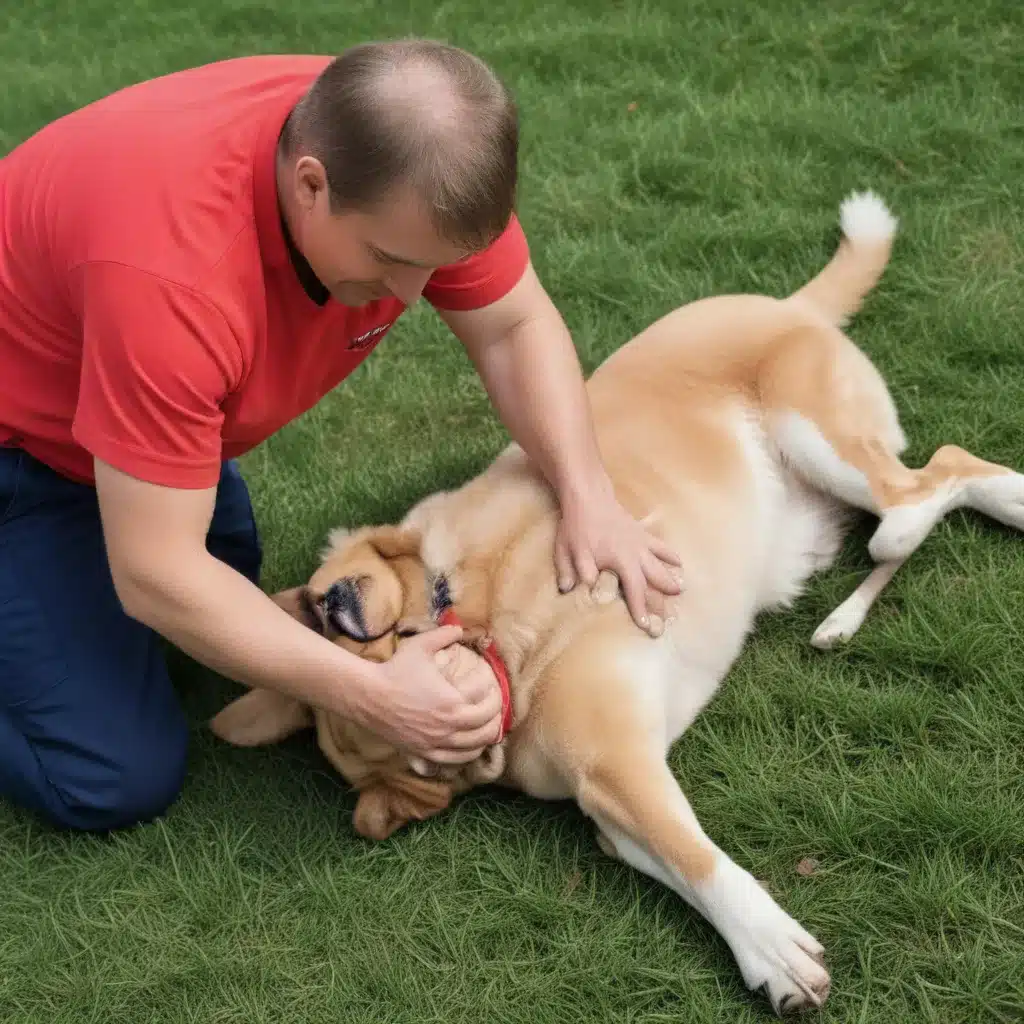
The Panic-Inducing Moment
Imagine this: You’re out for a leisurely stroll with your furry best friend, Buddy, when suddenly, he collapses right in front of you. Your heart sinks as you realize he’s unconscious and not breathing. In that moment, panic sets in, and your mind races, “What do I do? I can’t just stand here and watch him die!”
Well, my friend, today is your lucky day. I’m about to share with you the life-saving knowledge of canine CPR that could very well make the difference between Buddy living to see another day or…well, let’s not even go there.
Understanding the Basics of Dog CPR
Performing CPR on a dog is not exactly the same as doing it on a human. After all, our four-legged companions are built a bit differently. But the core principles are the same – restore breathing and circulation to keep that precious pup alive.
The first step is to check for the three vital signs: breathing, heartbeat, and responsiveness. If Buddy is unconscious and not breathing, it’s time to jump into action. According to the American Red Cross, you’ll want to start with 30 chest compressions.
Positioning and Compression Technique
Okay, so where exactly do you place your hands? Well, that depends on the size and shape of your dog. For larger, barrel-chested pups, you’ll want to place your hands on the lower half of the chest, just behind the elbows. For smaller, more flat-faced breeds like pugs or bulldogs, you may need to position them on the upper abdomen, just behind the ribs.
Regardless of where you place your hands, the compression technique is the same. Push down firmly, compressing the chest by about one-third to one-half of its width. And don’t be shy about it – you want to go fast, at a rate of 100 to 120 compressions per minute. Think about the beat of the Bee Gees’ “Stayin’ Alive” to help you keep the rhythm.
Rescue Breaths and Continued CPR
After those 30 chest compressions, it’s time to give two rescue breaths. Gently tilt Buddy’s head back, lift his chin, and cover his nose with your mouth. Blow in slowly and steadily until you see his chest rise.
Then it’s back to the chest compressions, repeating the cycle of 30 pushes and two breaths. Continue this pattern until you can detect a heartbeat and feel Buddy start to breathe on his own. According to Cornell University’s College of Veterinary Medicine, you’ll want to check for those vital signs every two minutes.
When to Perform Dog CPR
Okay, so now you know the how, but when do you actually need to bust out the chest compressions? Well, the obvious answer is if your dog is unconscious and not breathing. But there are a few other scenarios where CPR could be a lifesaver:
- Choking: If Buddy’s airway is blocked and he’s struggling to breathe, CPR can help dislodge the obstruction.
- Drowning: Whether it’s a pool, lake, or even a bathtub, water-related incidents can quickly lead to respiratory distress.
- Trauma: If your pup has been hit by a car or suffered some other kind of blunt force trauma, CPR may be necessary to keep him alive until you can get him to the vet.
The key is to act fast. The longer your dog goes without oxygen, the greater the risk of permanent brain damage or even death. So if you ever find yourself in one of these panic-inducing situations, don’t hesitate – start those chest compressions and rescue breaths immediately.
Practice Makes Perfect
Look, I get it – the thought of performing CPR on your beloved furry friend can be downright terrifying. But the more prepared you are, the better chance Buddy has of surviving. That’s why I highly recommend taking a dog first aid and CPR course. Not only will it teach you the proper techniques, but it will also give you the confidence to spring into action when every second counts.
And don’t worry, you don’t have to be a medical professional to master these life-saving skills. The American Kennel Club has some great online resources to get you started. Heck, you could even practice on a stuffed animal or a special CPR training manikin designed just for dogs.
The bottom line is this: Knowing how to perform dog CPR could mean the difference between your furry friend living or dying. And really, isn’t that worth a little time and effort? So, what are you waiting for? Head on over to www.ihavedogs.com and sign up for a course today. Your Buddy’s life may one day depend on it.

